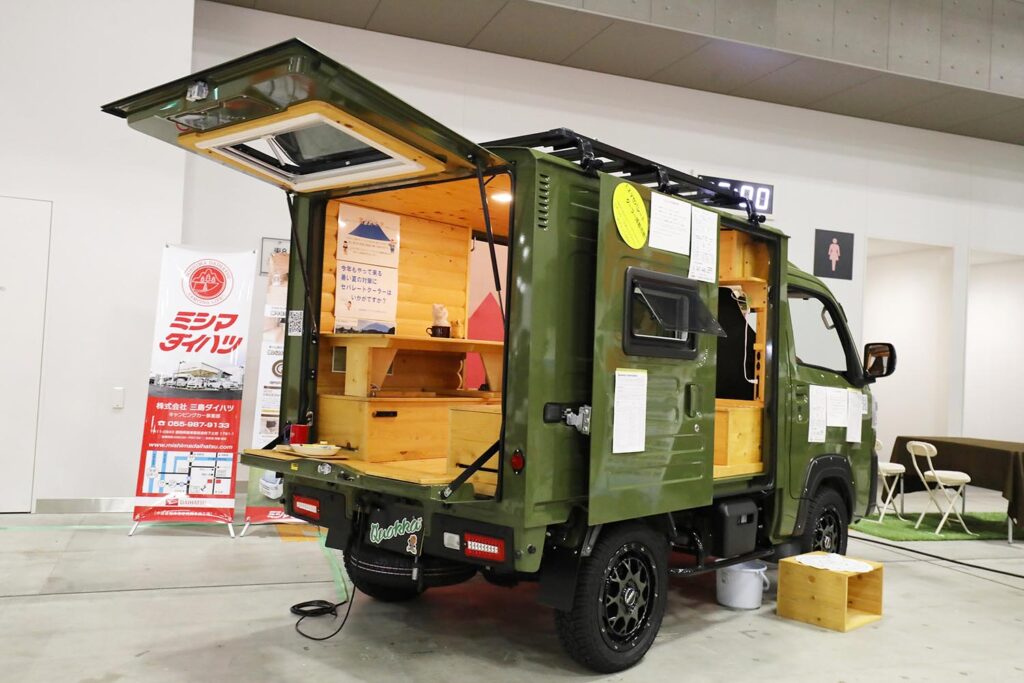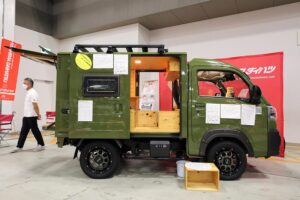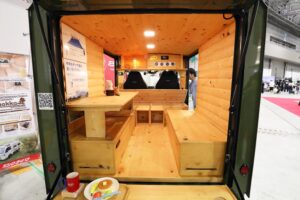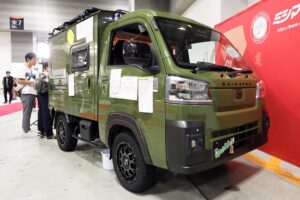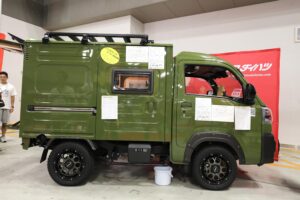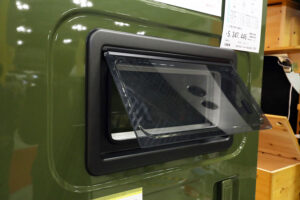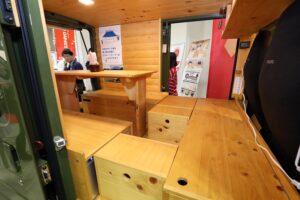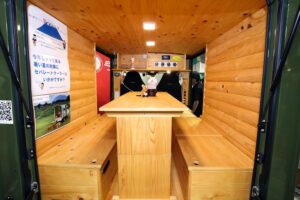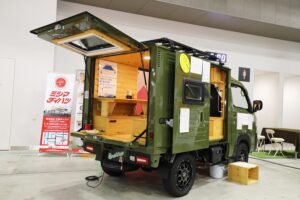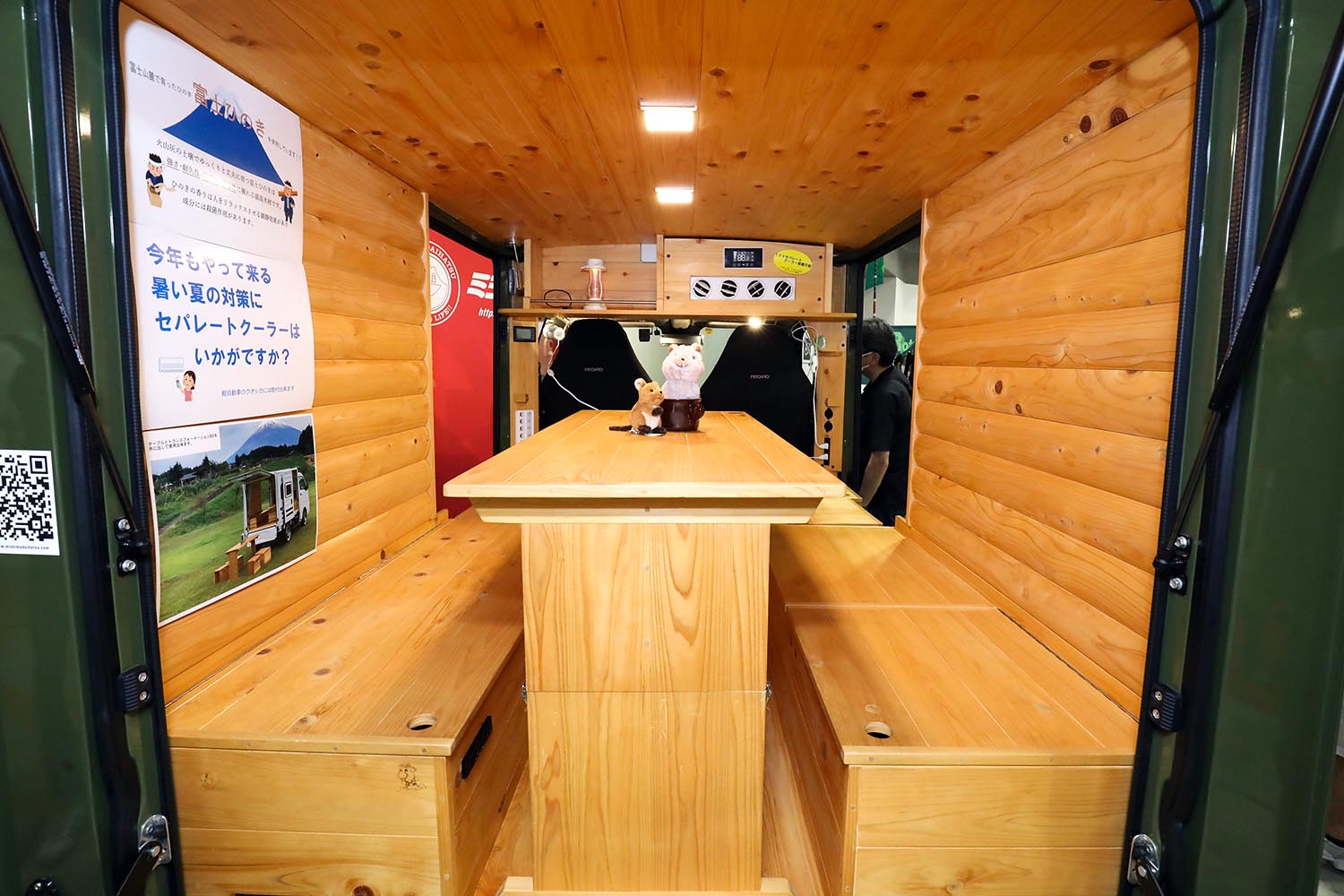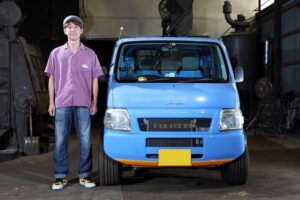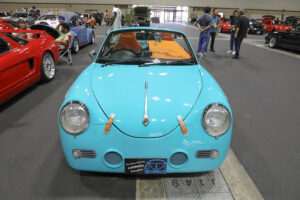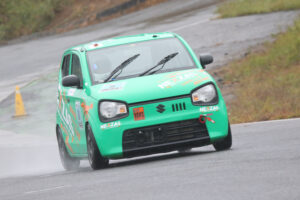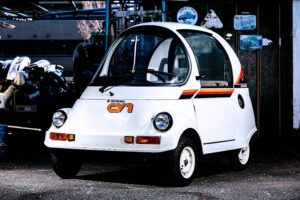Using cypress grown in the great nature of Fuji
Mishima Daihatsu proposes a camper that uses Fuji cypress from Shizuoka Prefecture and offers the warmth of solid wood. The kei-camper, given the catchphrase “Traveling Little Log House” and the name “Quokka Wannabee”, will surely be a messenger of happiness to its owner.
Cypress is the perfect material for camper interiors
Have you ever heard of the ‘quokka’ (quokka wallaby)? This small animal lives on Rottnest Island, a harbor town near Perth, Australia, and is characterized by its unguarded and very friendly nature. They are popular for their lovely faces, which always seem to be smiling because of the raised corners of their mouths. According to one theory, it is also said to have been the model for Pikachu, the well-known character from Pokémon.
In honor of such a cute and lovable quokka, Mishima Daihatsu named its original camper “Quokka Wannabe”. The base vehicle is a Daihatsu Hijet Panel Van. Quokka, a resident of the Australian forest, fits perfectly with the image of the camper model, which is made from plenty of Japanese cypress grown in the wilds of Fuji.
The Fuji cypress used grows slowly and strongly in volcanic ash soil and is regarded as the best wood for its strength, durability, moisture retention, and humidity control. In addition, the scent of the cypress has a calming effect that relaxes people, and it also contains ingredients that are recognized to have a disinfectant effect. This makes it an ideal material for campervan interiors.
As for the equipment of a campervan, firstly, it has a seating capacity of two passengers and a sleeping capacity of two. The front of the cargo area is covered with Fuji cypress interior material, creating a space with the warmth of wood. In addition, the space is designed to improve thermal insulation and humidity control.





